It is entirely possible that we’ve already seen the final games of the 2019-20 NHL season, as the COVID-19 suspension looms into Week 3. The longer the halt, the less likely it is that the season will resume.
With that in consideration, this season was a special season for the Vancouver Canucks as they celebrated their 50th anniversary. Funnily enough, they have actually only played 48 seasons, since their debut in the league was the 1970-71 season (making the 2020-21 season the official 50-year mark) and the 2004-05 lockout resulted in the deduction of one full season.
Related: Remembering the 1994 Vancouver Canucks
Nevertheless, the timing is right to create a list of the franchise’s fantastic four: 50th (or 48th) anniversary addition.
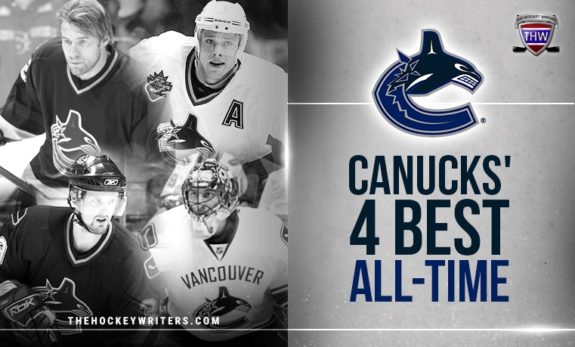
Think of this segment as a Mount Rushmore of Canucks legends. However, to make things spicy, I will be selecting one forward, defenceman, goaltender and a wild card from any position in ascending order of skill. Otherwise, the four best players in the club’s history would likely all be forwards just like the retired jerseys indicate, hanging from the rafters of Rogers Arena.
Best Defenceman – Mattias Ohlund
No, Quinn Hughes isn’t on this list – yet.
The Canucks have never had a top-three calibre defenceman in the NHL. In fact, not one single Canuck has taken home the Norris Trophy since the team joined the league.
Yikes!
The closest player the Canucks have ever had to that would be Mattias Ohlund. The hulking Swedish defenceman was steady as could be from the back end and consistently put up respectable offensive totals. Evidence was Ohlund’s second-place ranking in defenceman goals and points in a Vancouver uniform, behind only Alex Edler – a player he mentored during his career.
Related: Canucks’ Top 3 Defensemen All-Time
Drafting Ohlund 13th overall in the 1994 Entry Draft was the first piece towards the construction of those dynamic West Coast Express teams that were consistent playoff contenders. Ohlund didn’t make his debut until the season opener in 1997 played in Tokyo, Japan oddly enough. That would be the start of the best 770 games that the franchise has been blessed with from a defenceman.

Ohlund signed with the Tampa Bay Lightning in 2009 but he was such a Canucks legend he pledged to never score a goal for another team. Just kidding – although he did play 139 games for Tampa without registering a goal.
Once his stint with the Lightning concluded, Ohlund joined Harold Snepsts as the only other defenceman selected for the Canucks’ Ring of Honour, well-deserved for the third longest-tenured Canuck defenceman who was solid in all aspects of the game.
Best Goaltender – Roberto Luongo
Undoubtedly the best goaltender in this club’s history is Roberto Luongo. His trade also qualifies as one of the biggest steals in franchise history too. He was packaged along with Lukas Kraijcek and a sixth-round pick for a declining Todd Bertuzzi, a disappointing Bryan Allen and backup goaltender Alex Auld in a trade with the Florida Panthers in 2006.
Luongo’s first season on the West Coast was a legendary one that had him finish with 47 wins and a .921 save percentage, impressive enough to place second in Vezina Trophy voting to Martin Brodeur and second in Hart Trophy voting to Sidney Crosby. By definition, this means that Luongo was the more valuable player ahead of Brodeur, yet he lost the award for “best goalie” to Brodeur. A tough break for Roberto.
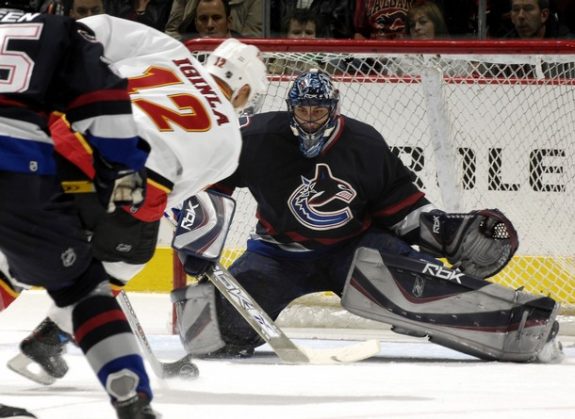
However, Luongo got his revenge over Brodeur by stealing his starting crease away and winning the 2010 Olympic gold medal in Vancouver as the starting goaltender – arguably his most impressive career accomplishment.
He backstopped the Canucks to within one game of a Stanley Cup victory until ultimately falling to the Boston Bruins in 2011. Once again, a tough break.
Kirk McLean and Richard Brodeur are the only Canuck netminders who can compare to Luongo. All three lead their teams to the Stanley Cup Final while McLean and Brodeur finished top-10 in Vezina voting twice and once respectively. Comparatively, Luongo never finished outside the top-10 in each of his first five seasons in Vancouver.
Related: Roberto Luongo – A Legendary Career
Luongo holds the club records for wins and shutouts plus is second in goals-against average and save percentage to his one-time backup, Cory Schneider – who played significantly fewer games.
Luongo’s departure from Vancouver got ugly before he was traded back to the Panthers. However, his recent appearance at the Sedins twins’ jersey retirement suggests that everything is well between the team and its best goalie. Hopefully, Luongo gets the proper celebration he deserves in Vancouver, either in the Ring of Honour or having his jersey retired like it was in Florida.
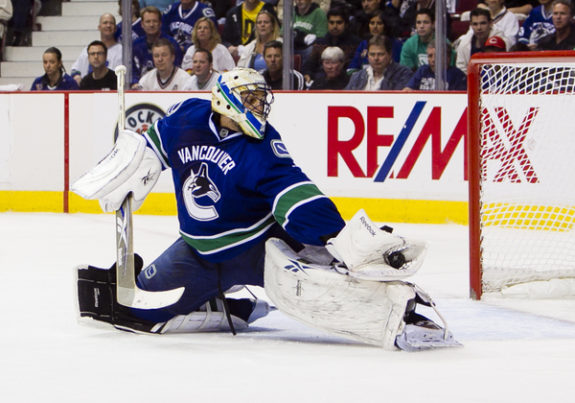
The Montreal native will garner plenty of Hockey Hall of Fame consideration too, now that he is retired. Briefly, Luongo was the only goalie to have the most wins for two franchises until Marc-Andre Fleury and the Vegas Golden Knights had to mess everything up. If Luongo is enshrined into the HHOF, it should be as a Canuck as his most competitive years were played north of the border.
Best Player (Wild Card) – Pavel Bure
Vancouver’s first superstar. Pavel Bure was the first shiny toy that Canucks fans got to admire and they basked in his glittering glow. It took more than 20 years for the bonafide superstar to finally arrive in Vancouver and don Canuck colours, but it was well worth the wait.
Bure’s time in British Columbia was short but so sweet. I have categorized “The Russian Rocket” as the Canucks best player meaning he was the biggest star and most exciting player the team has ever had.
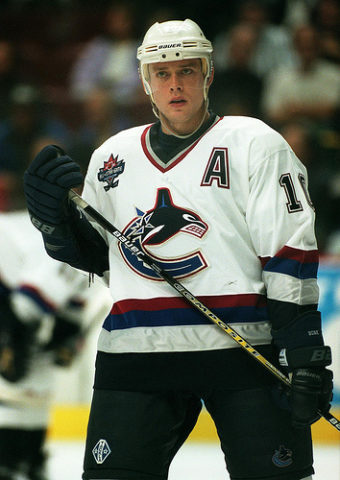
When Bure was at the top of his game, he was the best player in team history. In fact, Bure’s goals per game of .623 ranks third behind only Mike Bossy and Mario Lemieux in the NHL since the 1930s. It’s fair to say that at Bure’s peak, he was one of the best to ever lace them up.
The Moscow native was drafted 113th overall in the 1989 draft despite most teams believing he wasn’t eligible to be taken that year due to a lack of games he had played in Russia. Luckily the Canucks found a loophole in that Bure had an exhibition game that went unaccounted for and snagged him late in the draft.
Bure was the first Canuck to capture the Calder Trophy in his rookie season and then exploded for two 60-goal campaigns in the following years. To this day, no other Canuck has scored 60 in a season.
The Russian winger scored arguably the most iconic goal in team history in a Game 7 double-overtime series clincher over the rival Calgary Flames. This goal propelled Vancouver all the way to Game 7 of the Stanley Cup Final where they weren’t as fortunate against the New York Rangers.
Bure still maintains the highest points per game average for all Canucks players with 1.12. It is a shame that his tenure in Vancouver and also the league wasn’t longer as his potential seemed limitless.
In only eight seasons, Bure managed to put Vancouver on the map and because of that, he was rightfully inducted into the Hockey Hall of Fame and had his jersey retired as a Canuck.
Best Forward – Henrik Sedin
Henrik Sedin’s inclusion is an obvious one. The franchise leader in points, assists, games played and many more stats, was originally drafted third overall by the Canucks in 1999 – one spot behind his brother, Daniel.
The Sedin twins struggled notoriously during their first few years in Vancouver after having lofty expectations coming in as high draft picks.
However, by the end of the 2000s, the script began to flip and it was Henrik leading the charge. In 2009, Henrik captured the team’s first-ever Art Ross Trophy with his league-leading 112 points, breaking Bure’s Canuck record of 110 points in the process. Shortly after, Henrik claimed the Hart Trophy for the first time in franchise history too.
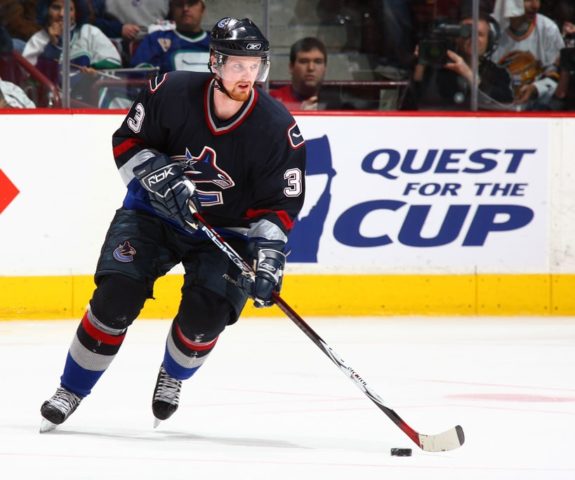
The Sedins’ cyclic style of play was unseen before in the NHL and was effective up until their final days playing. Henrik was an elite playmaker who accumulated the second most assists after Joe Thornton since entering the league in 2000-01.
Not only was his skill unmatched but he was also a leader. A team captain for a record eight years, the Canucks came the closest they’ve ever been to winning the Stanley Cup with Henrik as their leader in 2011.
The lifelong Canuck had tenure combined with production and accolades that might not be matched for a very long time. Certainly, his unique style with his brother will never be duplicated in the foreseeable future and that is why their jerseys have been retired and their induction into the Hockey Hall of Fame won’t take long.
Henrik was the face of the franchise for its best decade of hockey; therefore, why wouldn’t his face be included in our Mount Rushmore.
Related: The Sedin Twins and the 1999 NHL Draft
I understand that no Canucks’ Mount Rushmore is complete without Daniel Sedin but technically speaking, he does share the same face as his twin brother who is already up there.
Are we really going to make the stone chiseler, dangerously suspended up in the air, carve the same face twice? Of course not – that would be cruel. So just cross your eyes to see double when looking over at that region of the monument and everything should be just fine.
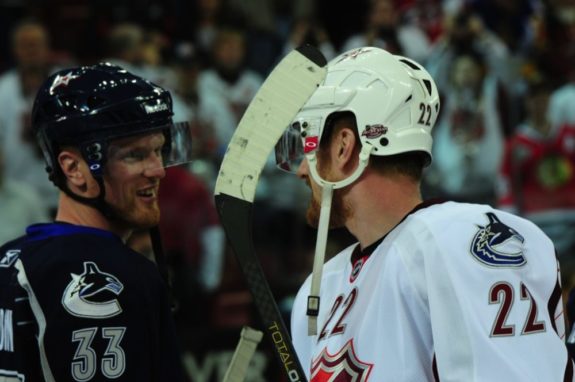
That rounds out the four greatest Canucks with respect to the positions they played. Might there be a current Canuck player in the process of securing his spot among these team legends? It’s very possible considering the young and growing team we’ve witnessed this year. I’m already counting down the days until the 100th-anniversary edition of the top four all-time Canucks can be released.